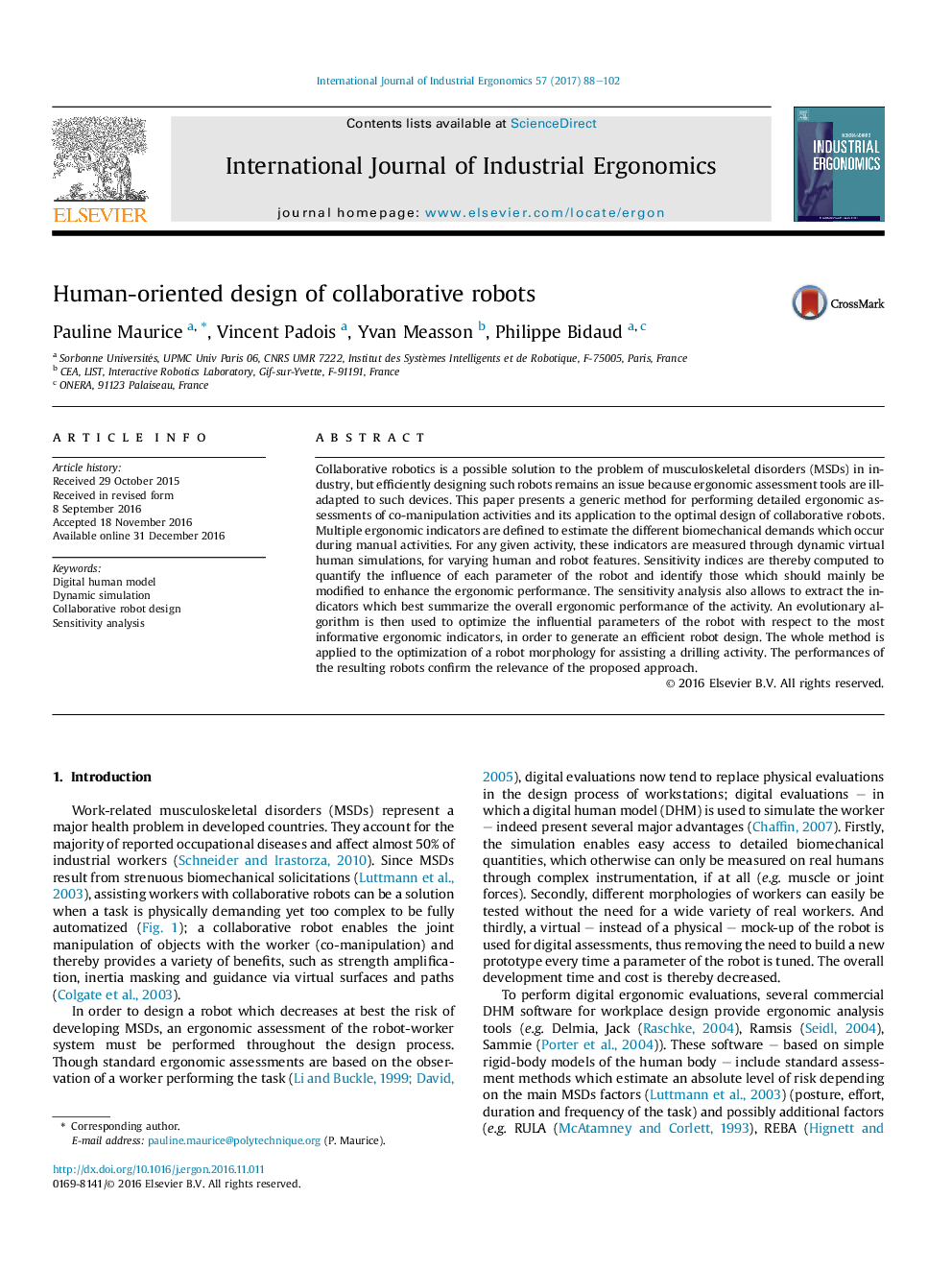| Article ID | Journal | Published Year | Pages | File Type |
|---|---|---|---|---|
| 5123711 | International Journal of Industrial Ergonomics | 2017 | 15 Pages |
â¢A method for performing detailed ergonomic assessments of co-manipulation activities is proposed.â¢The method relies on sensitivity analysis of ergonomic indicators, through digital human simulations.â¢Digital human simulations are coupled to an evolutionary algorithm for robot design optimization.â¢The whole method is time and cost effective because it requires only little input data.
Collaborative robotics is a possible solution to the problem of musculoskeletal disorders (MSDs) in industry, but efficiently designing such robots remains an issue because ergonomic assessment tools are ill-adapted to such devices. This paper presents a generic method for performing detailed ergonomic assessments of co-manipulation activities and its application to the optimal design of collaborative robots. Multiple ergonomic indicators are defined to estimate the different biomechanical demands which occur during manual activities. For any given activity, these indicators are measured through dynamic virtual human simulations, for varying human and robot features. Sensitivity indices are thereby computed to quantify the influence of each parameter of the robot and identify those which should mainly be modified to enhance the ergonomic performance. The sensitivity analysis also allows to extract the indicators which best summarize the overall ergonomic performance of the activity. An evolutionary algorithm is then used to optimize the influential parameters of the robot with respect to the most informative ergonomic indicators, in order to generate an efficient robot design. The whole method is applied to the optimization of a robot morphology for assisting a drilling activity. The performances of the resulting robots confirm the relevance of the proposed approach.
